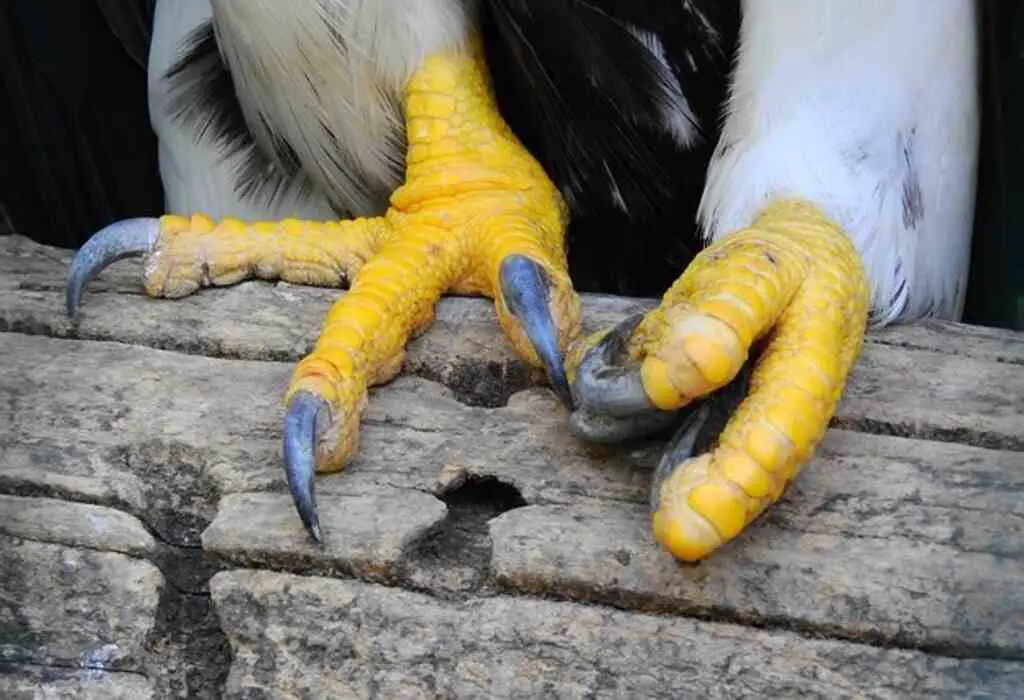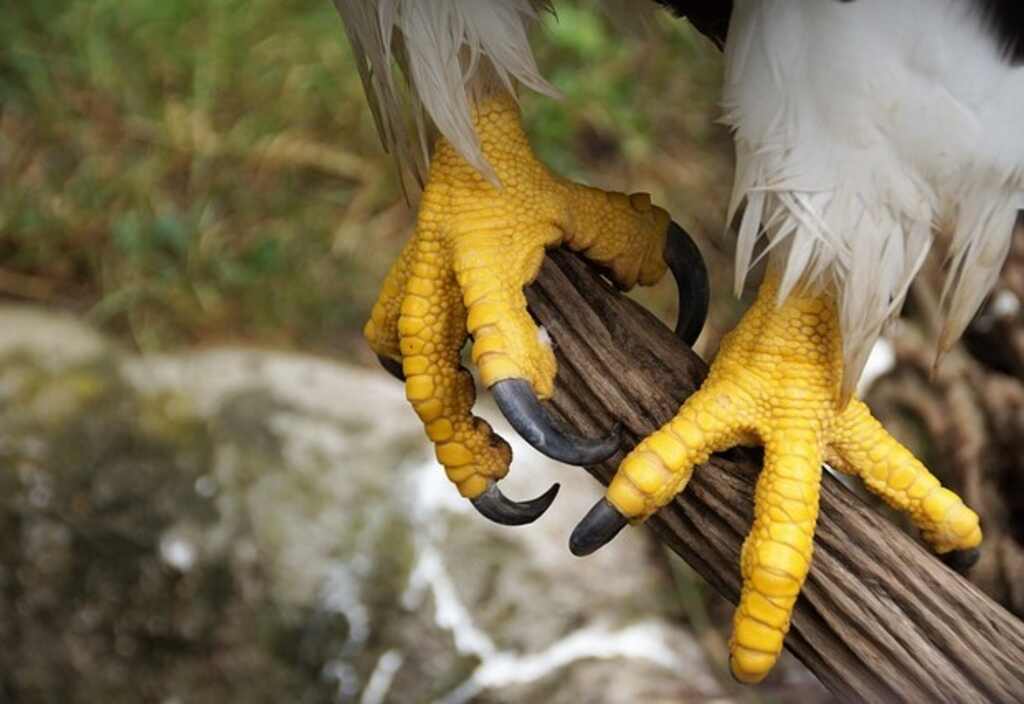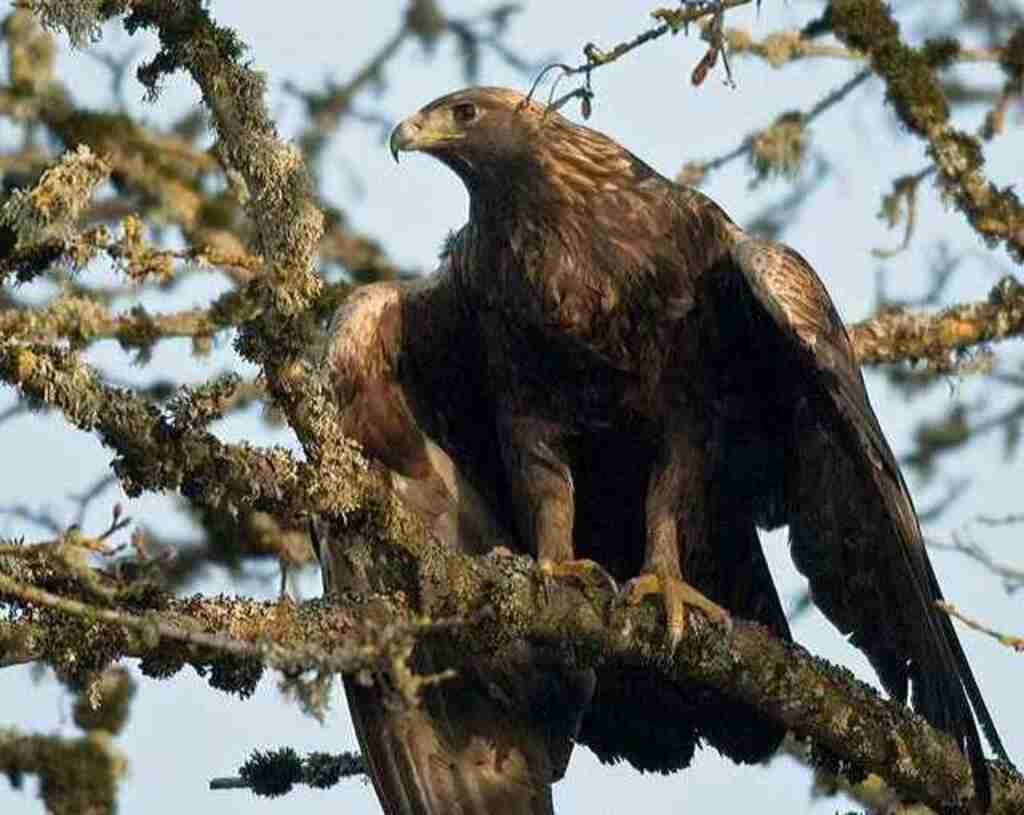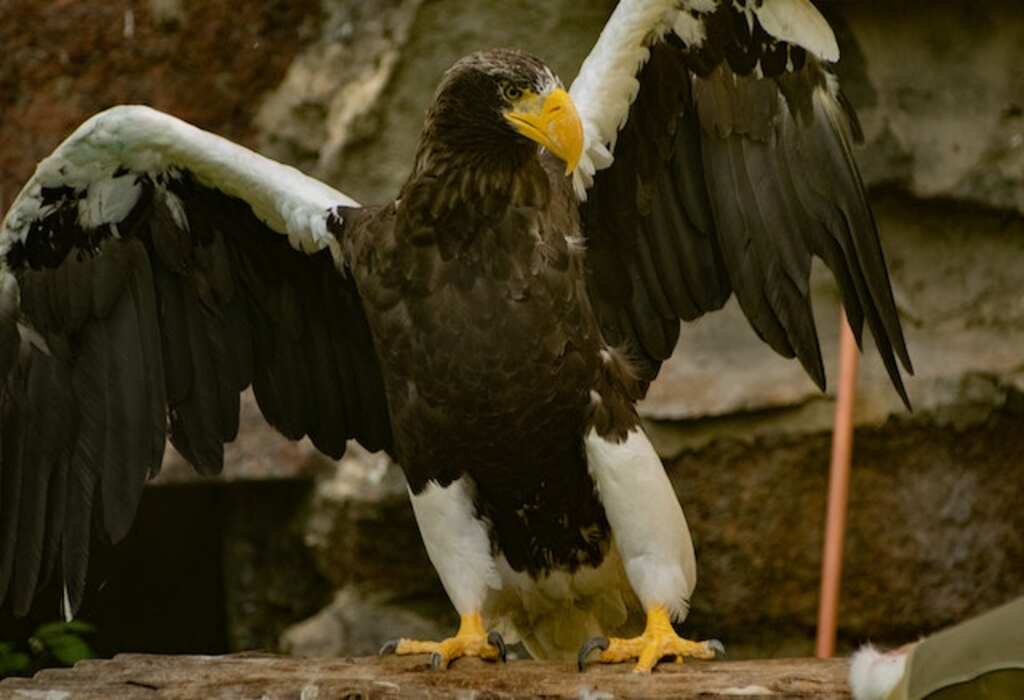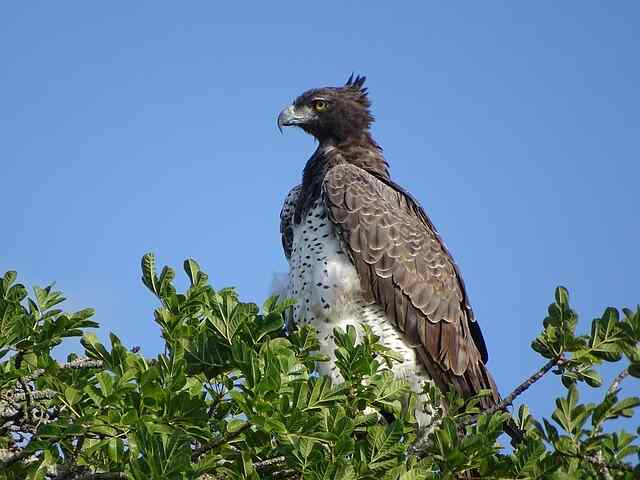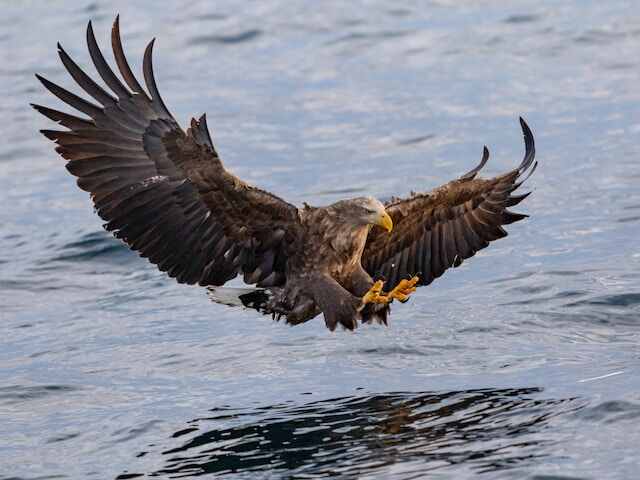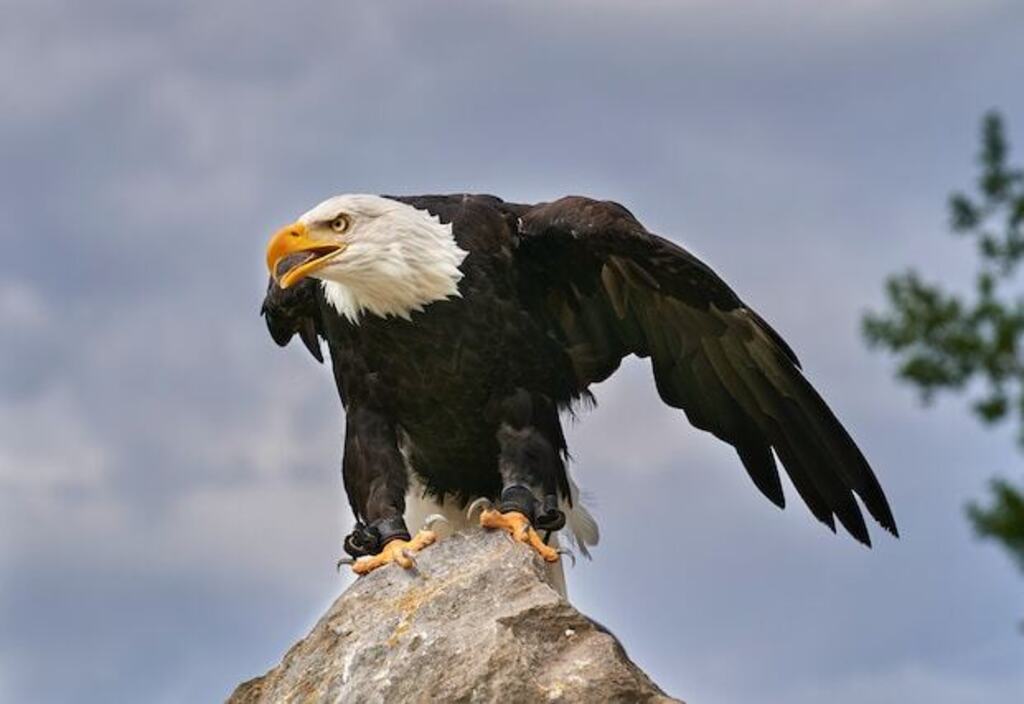In the fascinating world of avian predators, few creatures command as much awe as the majestic eagle. With powerful wings, keen eyesight, and razor-sharp talons, they are formidable hunters.
Among eagle species, a captivating question arises: which eagle possesses the strongest grip?
This article delves into the grip strengths of notable species like the Harpy, Golden, Philippine, Steller’s Sea, White-tailed, and Bald Eagles.
By exploring scientific literature and physiological adaptations, we gain insight into their incredible strength and dexterity.
Join us on this journey to uncover the true grip strength champion among the eagle kingdom.
Table of Contents
- 1 Key Takeaways
- 2 Which Eagle Has The Strongest Grip Strength
- 3 Introduction to Eagles and Their Gripping Abilities
- 4 The Harpy Eagle: A Powerful Predator
- 5 The Golden Eagle: Master of the Skies
- 6 The Philippine Eagle: A Strong Grip in the Treetops
- 7 The Steller’s Sea Eagle: A Mighty Hunter
- 8 The Martial Eagle: A Formidable Predator
- 9 The African Crowned Eagle: Impressive Strength in the Forests
- 10 The White-tailed Eagle: A Grip of Great Power
- 11 The Bald Eagle: America’s Symbol of Strength
- 12 Comparing Grip Strengths: Which Eagle Reigns Supreme?
- 13 Conclusion: The Fascinating World of Eagles and Their Incredible Abilities
- 14 Frequently Asked Questions
- 15 Author
Key Takeaways
- The Philippine Eagle, also known as the Monkey-Eating Eagle, has powerful talons up to four inches in length.
- The Golden Eagle has talons capable of exerting a force of over 400 pounds per square inch.
- The Bald Eagle is a significant symbol of strength in America, known for its ability to soar through the skies with grace and power.
- Factors affecting an eagle’s grip strength include size and talon structure.
Which Eagle Has The Strongest Grip Strength
The Harpy eagle (Harpia harpyja) boasts the strongest grip strength among eagles. Known for its powerful talons, this majestic bird of prey can exert a force of up to 500 pounds per square inch (psi) with its grip.
Such formidable strength enables the Harpy eagle to catch and carry large prey, making it one of the most impressive hunters in the avian world.
Introduction to Eagles and Their Gripping Abilities
The gripping abilities of eagles, particularly their grip strength, is an intriguing aspect that warrants exploration in understanding the capabilities of these majestic birds.
Eagles are known for their extraordinary hunting skills, and their gripping abilities play a crucial role in capturing and handling prey.
Different eagle species inhabit various habitats around the world, ranging from forests to open plains. Each habitat presents unique challenges, and eagles have adapted their gripping abilities accordingly.
These birds employ a variety of hunting techniques, such as aerial pursuits, surprise attacks, and stooping dives, to catch their prey.
Their grip strength enables them to firmly grasp and immobilize their targets, ensuring a successful hunt.
Transitioning into the subsequent section about the harpy eagle, this powerful predator exemplifies the remarkable gripping abilities possessed by certain eagle species.
The Harpy Eagle: A Powerful Predator
Renowned for its formidable talons, the Harpy Eagle exudes an air of dominance as it effortlessly clenches its prey.
This majestic bird, found in the tropical rainforests of Central and South America, possesses a unique hunting behavior that sets it apart from other eagles.
With a wingspan of up to seven feet and weighing up to 20 pounds, the Harpy Eagle is one of the largest and most powerful eagles in the world.
Its powerful grip strength enables it to capture and carry prey weighing up to 20 pounds, including monkeys and sloths, effortlessly through the dense forest canopy.
Adapted to its habitat, the Harpy Eagle is a master of stealth, lurking in the treetops and swooping down on unsuspecting prey.
Transitioning to the subsequent section, the golden eagle’s hunting prowess is equally impressive.
The Golden Eagle: Master of the Skies
With its impressive wingspan and keen eyesight, the Golden Eagle reigns supreme in the skies, effortlessly soaring above its mountainous domain.
Known for its powerful flight, this majestic bird possesses remarkable hunting techniques that allow it to catch prey with ease.
The Golden Eagle primarily hunts small to medium-sized mammals, such as rabbits and ground squirrels, using its exceptional speed and agility.
It will often spot its prey from high above and then swoop down, using its sharp talons to grip and immobilize its target.
These talons are incredibly strong, capable of exerting a force of over 400 pounds per square inch, making it one of the strongest grips among eagles.
When it comes to nesting, the Golden Eagle chooses high and secluded locations, typically on cliffs or in large trees. This ensures the safety of its young and provides a secure vantage point for hunting.
Transitioning to the next section, the Philippine Eagle showcases its own impressive grip strength in the treetops.
The Philippine Eagle: A Strong Grip in the Treetops
Perched high in the treetops, the Philippine Eagle showcases its impressive ability to firmly grasp its prey.
The Philippine Eagle, also known as the Monkey-Eating Eagle, is one of the largest and most powerful eagles in the world.
Its hunting techniques involve swooping down from its perch and using its strong grip to catch and secure its prey.
The importance of a strong grip for the Philippine Eagle cannot be overstated, especially when hunting in the treetops where its prey often seeks refuge.
With its powerful talons, which can measure up to four inches in length, the Philippine Eagle is able to maintain a secure hold on its prey, ensuring a successful hunt.
Transitioning into the subsequent section about the Steller’s Sea Eagle, another mighty hunter, we delve into another fascinating aspect of the world of eagles.
The Steller’s Sea Eagle: A Mighty Hunter
The Steller’s Sea Eagle, known for its impressive size and hunting prowess, is a dominant predator in its coastal habitat. With a wingspan of up to 8 feet and a weight of up to 20 pounds, this eagle is one of the largest birds of prey in the world.
Its hunting techniques are highly effective, as it primarily feeds on fish, such as salmon and trout, which it catches by diving into the water from the air.
The Steller’s Sea Eagle can be found in coastal areas of northeastern Asia, particularly in Russia and Japan. It prefers habitats with access to both open water and forested areas.
Its range extends from the Sea of Okhotsk to the Kamchatka Peninsula and the Kuril Islands.
Transitioning to the subsequent section, the martial eagle, another formidable predator, showcases remarkable hunting skills.
The Martial Eagle: A Formidable Predator
Renowned for its exceptional hunting abilities, the Martial Eagle possesses talons capable of exerting a force of around 200 pounds per square inch, ensuring its prey is captured with remarkable efficiency.
This formidable predator employs various hunting techniques to secure its meals. The Martial Eagle is known to soar high in the sky, scanning the landscape below for potential prey.
Once a target is spotted, it dives with incredible speed, using its powerful wings and sharp eyesight to accurately strike its victim.
Furthermore, the Martial Eagle is highly adaptable, inhabiting a wide range of habitats including open savannas, woodland areas, and even mountainous regions. Its behavior is solitary, with each eagle occupying its own territory and fiercely defending it from intruders.
The Martial Eagle’s hunting prowess and adaptable nature make it a true force to be reckoned with in the animal kingdom.
Transitioning to the subsequent section, the African Crowned Eagle showcases impressive strength in the forests.
The African Crowned Eagle: Impressive Strength in the Forests
Impressively, the African Crowned Eagle demonstrates its formidable abilities in the forest. Known for its impressive hunting techniques and unique forest adaptations, this eagle has developed an exceptional grip strength that allows it to catch and subdue prey with ease.
With its powerful talons and sharp beak, the African Crowned Eagle can take down animals as large as monkeys and antelopes.
Its grip strength is so strong that it can break the bones of its prey, ensuring a swift and efficient kill.
This eagle’s ability to navigate through dense forest canopies and ambush its prey from above showcases its remarkable adaptability and prowess as a predator.
Transitioning to the subsequent section about the white-tailed eagle, we will explore another eagle species that possesses a grip of great power.
The White-tailed Eagle: A Grip of Great Power
Moving from the impressive strength of the African Crowned Eagle, we now turn our attention to the White-tailed Eagle, another majestic bird known for its formidable grip.
With a wingspan reaching up to 8 feet, the White-tailed Eagle possesses a grip of great power, making it one of the strongest eagles in the world.
In its hunting techniques, the White-tailed Eagle primarily relies on its grip strength to seize and carry its prey. It can snatch fish from the water’s surface or capture small mammals and birds with its sharp talons.
This eagle is known to inhabit coastal regions, lakes, and rivers, where it can find an abundant supply of food. Its habitat preferences include large trees for nesting and open spaces for hunting.
As we explore further into the realm of these majestic creatures, we now delve into the next topic: the Bald Eagle, America’s symbol of strength.
The Bald Eagle: America’s Symbol of Strength
The Bald Eagle, a significant symbol of strength in America, is known for its impressive ability to soar through the skies with grace and power.
Its majestic appearance and commanding presence have made it a revered figure throughout American history.
The bald eagle’s role in American history is deeply intertwined with the country’s values of freedom and independence.
As a result, conservation efforts for bald eagles in the United States have been substantial.
Due to habitat loss and hunting, the bald eagle population once faced a significant decline.
However, through conservation efforts such as the banning of DDT and the establishment of protected areas, the bald eagle population has made a remarkable recovery.
These efforts have allowed this iconic bird to maintain its place as a symbol of strength and freedom in America.
Transitioning to the subsequent section about comparing grip strengths, it is intriguing to explore which eagle truly reigns supreme.
Comparing Grip Strengths: Which Eagle Reigns Supreme?
Comparatively analyzing the gripping abilities of different bird species presents an intriguing inquiry into the dominance of one species over another.
When it comes to comparing eagle species’ gripping abilities, one question arises: which eagle has the strongest hold?
Factors affecting an eagle’s grip strength include its size and talon structure. The larger the eagle, the stronger its grip tends to be.
Additionally, the structure of an eagle’s talons plays a significant role in its gripping abilities. Eagles possess sharp, curved talons that are designed to latch onto and firmly grasp their prey.
These talons are equipped with strong muscles, allowing eagles to exert an impressive amount of force when gripping.
Ultimately, the combination of size and talon structure determines an eagle’s grip strength. Transitioning into the subsequent section, the fascinating world of eagles and their incredible abilities reveals itself.
Conclusion: The Fascinating World of Eagles and Their Incredible Abilities
Transitioning into the subsequent section, the awe-inspiring realm of eagles and their extraordinary capabilities unfolds.
Eagles, with their immense wingspans and powerful talons, possess a multitude of impressive abilities that allow them to thrive in their environments.
One fascinating aspect of these majestic birds is their flight patterns. Eagles are known for their soaring flight, utilizing thermals and updrafts to effortlessly glide through the air for long distances.
Their large wings and strong muscles enable them to achieve incredible speeds and maintain stable flight even in adverse weather conditions.
Another remarkable ability of eagles lies in their hunting techniques. These birds of prey possess exceptional eyesight, allowing them to spot their prey from great distances.
Once a potential target is identified, eagles employ their strong grip strength to capture and carry their prey back to their nests.
By exploring eagle flight patterns and understanding eagle hunting techniques, we gain a deeper appreciation for the incredible abilities of these majestic creatures.
Frequently Asked Questions
How long do eagles typically live in the wild?
The longevity of eagles in the wild varies due to factors such as predation, disease, and habitat destruction. However, in captivity, where these factors may be controlled, eagles can live longer lives.
What is the average wingspan of an eagle?
The average wingspan of an eagle varies depending on the species, ranging from about 6 to 9 feet. Eagles have long wingspans to aid in their hunting techniques and cover large distances while searching for prey.
How do eagles catch their prey?
Eagles use a variety of hunting techniques to catch their prey. They employ stealth, agility, and speed, resembling a skilled predator in pursuit. Their prey preference varies, but eagles typically target smaller mammals, fish, and birds.
How are eagles able to spot their prey from such great heights?
The eagle’s exceptional eyesight plays a crucial role in its hunting techniques, enabling it to spot prey from great heights. This ability is due to the eagle’s large eyes, high density of photoreceptors, and specialized eye muscles.
How fast can eagles fly?
Eagles can fly at speeds of up to 80 miles per hour, thanks to their unique wing shape and size. This allows them to efficiently navigate their environment and employ various hunting techniques, such as soaring and stooping, to catch their prey. The aerodynamics of eagle flight play a crucial role in their ability to achieve such impressive speeds.

